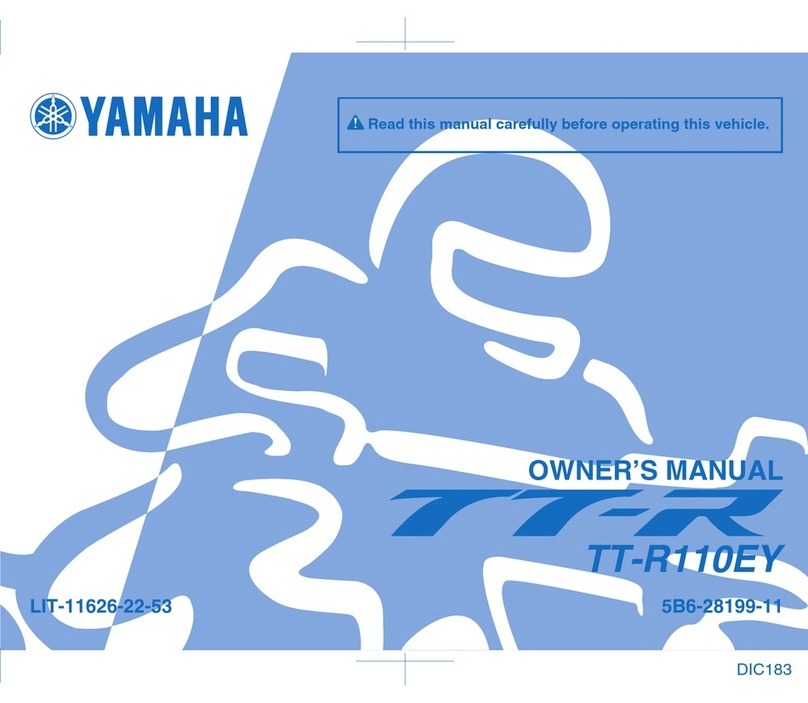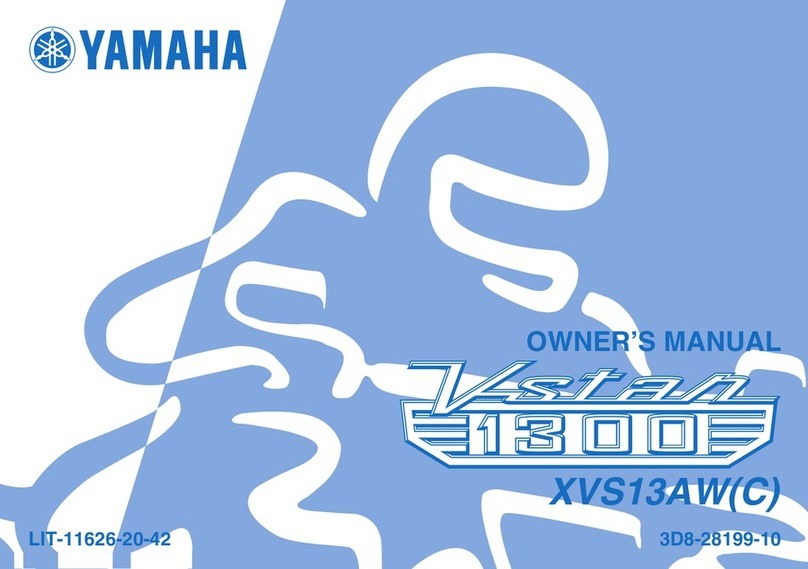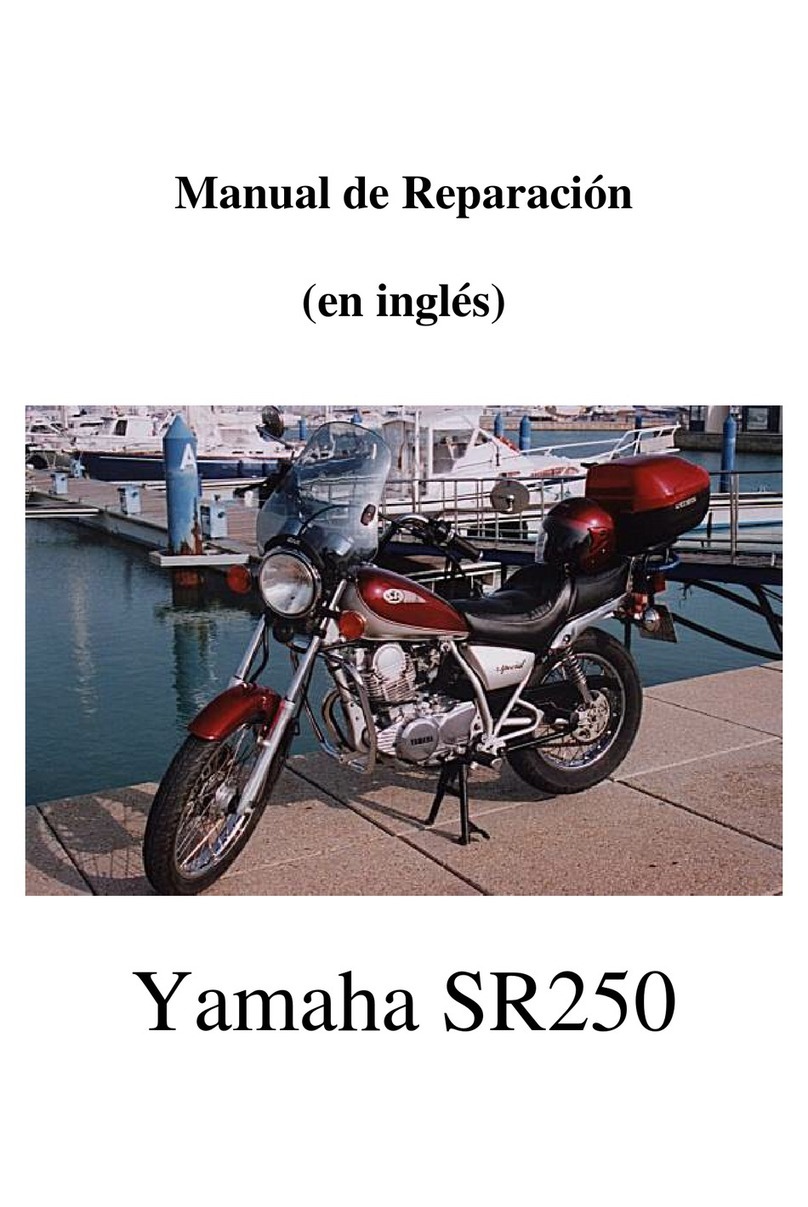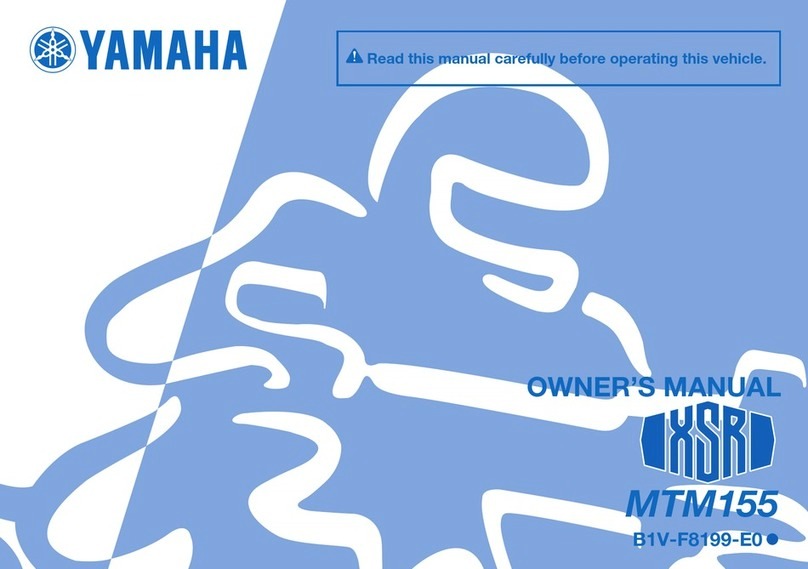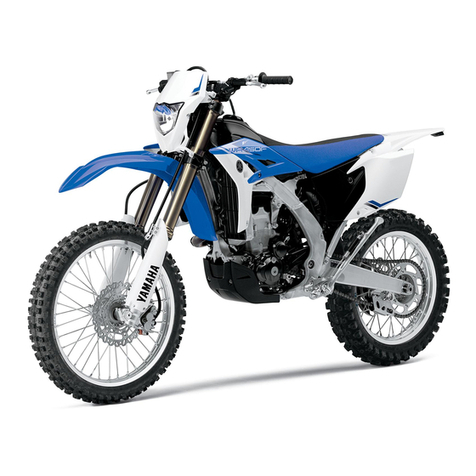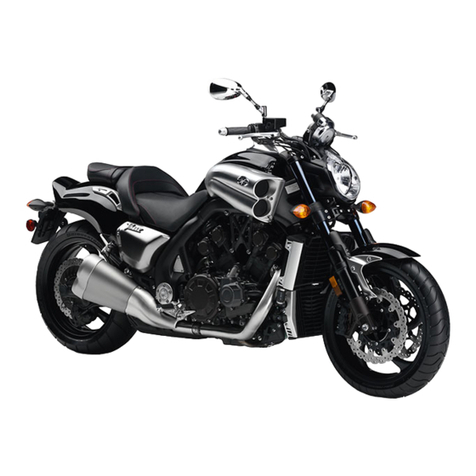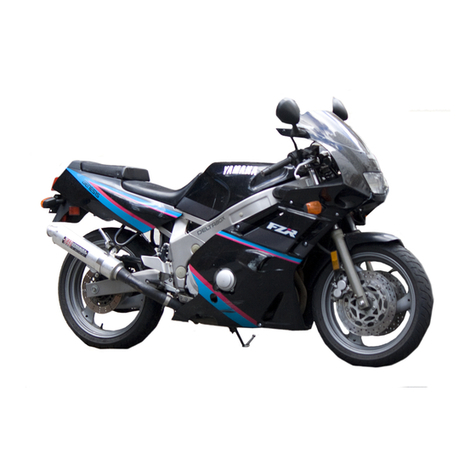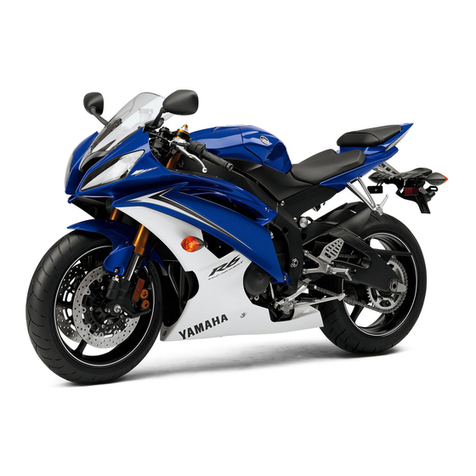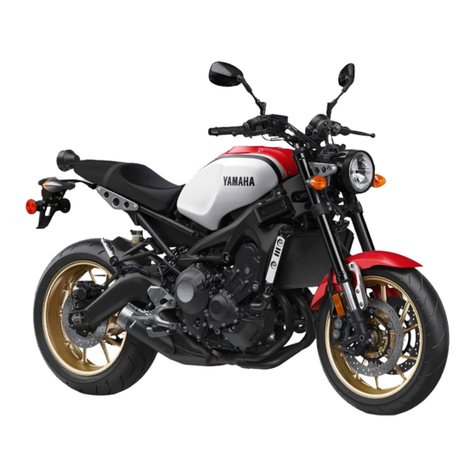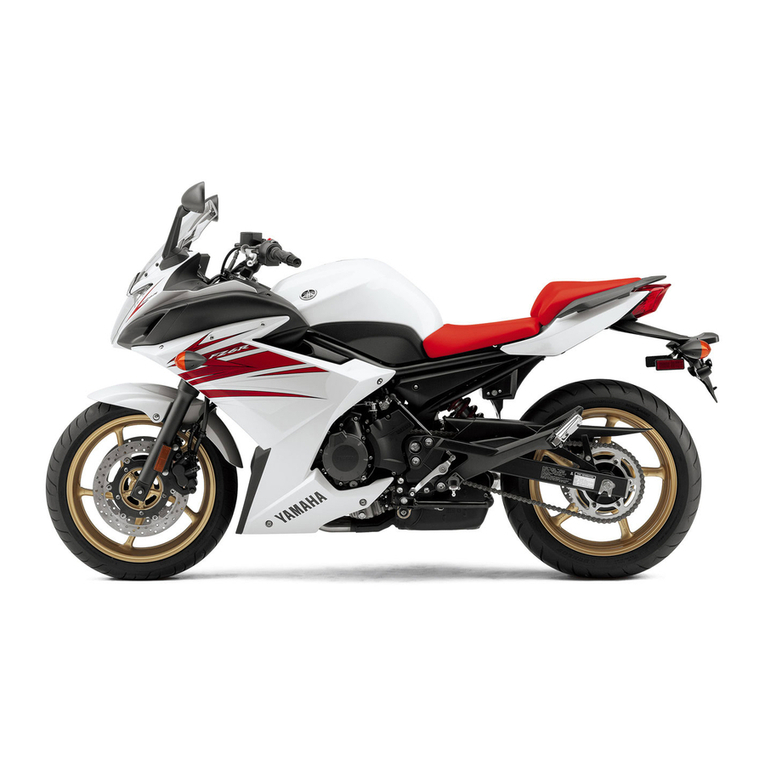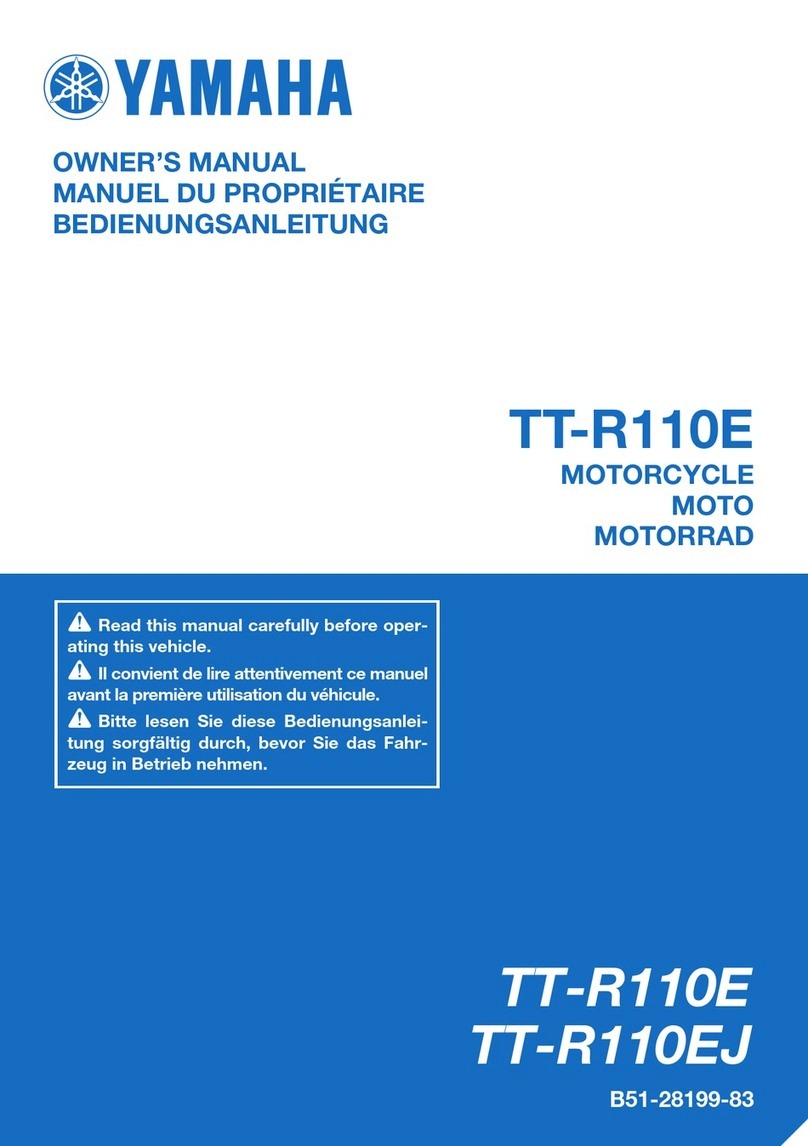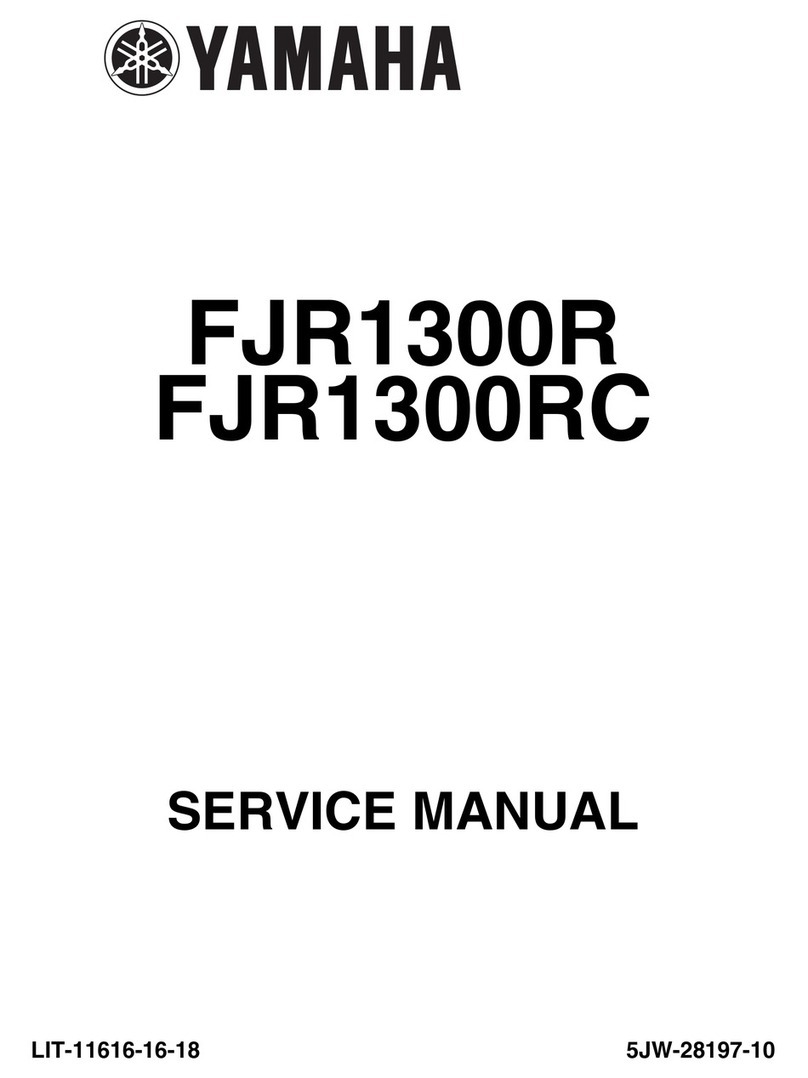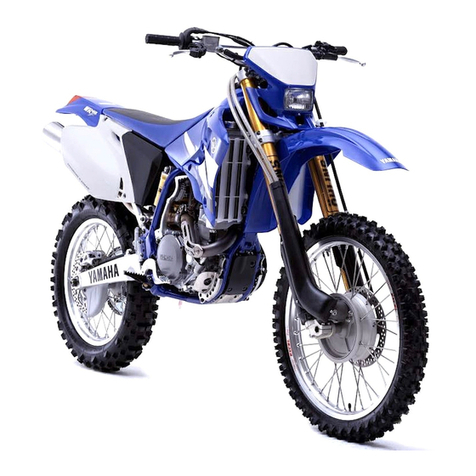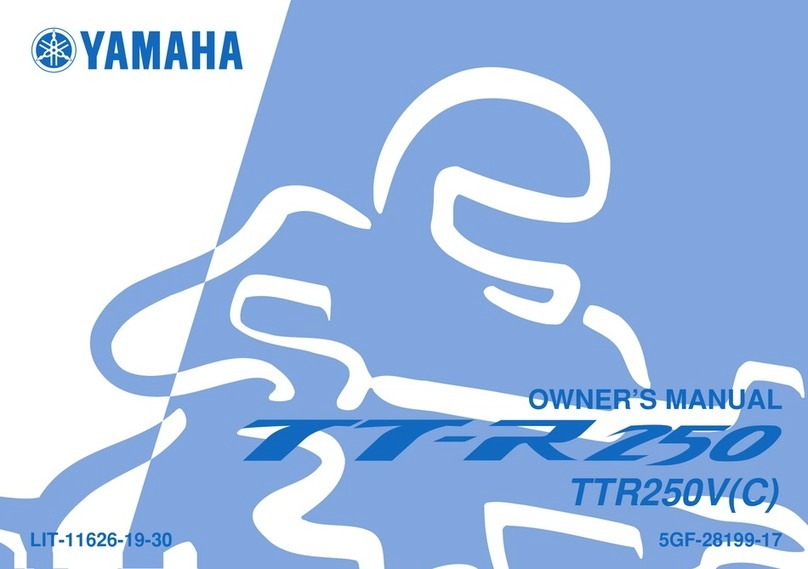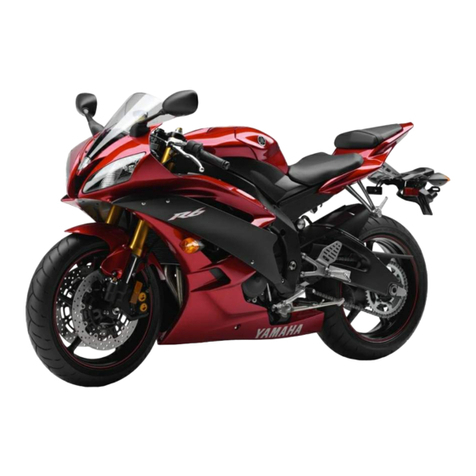
Table of contents
Safety information............................ 1-1
Description ....................................... 2-1
Left view ......................................... 2-1
Right view....................................... 2-2
Controls and instruments ............... 2-3
Instrument andcontrol functions... 3-1
Immobilizer system......................... 3-1
Main switch/steering lock............... 3-2
Indicator lights and warning
lights............................................ 3-4
Speedometer.................................. 3-5
Tachometer .................................... 3-5
Multi-function display ..................... 3-6
Handlebar switches........................ 3-9
Clutch lever .................................. 3-10
Shift pedal .................................... 3-11
Brake lever.................................... 3-11
Brake pedal .................................. 3-12
Fuel tank cap................................ 3-12
Fuel............................................... 3-13
Fuel tank breather hose and
overflow hose............................ 3-14
Catalytic converters ..................... 3-14
Seat .............................................. 3-15
Adjusting the front fork................. 3-16
Adjusting the shock absorber
assembly................................... 3-18
Luggage strap holders ................. 3-20
EXUP system................................ 3-21
Sidestand ...................................... 3-21
Ignition circuit cut-off system .......3-22
For your safety – pre-operation
checks ...............................................4-1
Operation andimportant riding
points .................................................5-1
Starting the engine..........................5-1
Shifting ............................................5-2
Tips for reducing fuel
consumption................................5-3
Engine break-in...............................5-3
Parking ............................................5-4
Periodic maintenance and
adjustment ........................................6-1
Owner’s tool kit...............................6-2
Periodic maintenance chart for the
emission control system..............6-3
General maintenance and
lubrication chart...........................6-4
Removing and installing panels ......6-8
Checking the spark plugs ...............6-9
Engine oil and oil filter element .....6-10
Replacing the air filter element
and cleaning the check hose.....6-13
Checking the throttle grip free
play ............................................6-15
Valve clearance.............................6-15
Tires ..............................................6-15
Cast wheels .................................. 6-18
Clutch lever................................... 6-18
Checking the brake lever free
play............................................ 6-18
Brake light switches ..................... 6-19
Checking the front and rear brake
pads .......................................... 6-19
Checking the brake and clutch
fluid levels.................................. 6-20
Changing the brake and clutch
fluids.......................................... 6-21
Drive chain slack........................... 6-22
Cleaning and lubricating the
drive chain................................. 6-23
Checking and lubricating the
cables........................................ 6-24
Checking and lubricating the
throttle grip and cable............... 6-24
Checking and lubricating the
brake and shift pedals............... 6-24
Checking and lubricating the
brake and clutch levers ............. 6-25
Checking and lubricating the
sidestand................................... 6-26
Lubricating the swingarm
pivots......................................... 6-26
Checking the front fork................. 6-26
Checking the steering................... 6-27
Checking the wheel bearings ....... 6-27
Battery .......................................... 6-28
Replacing the fuses ...................... 6-29
U2PNE1E0.book Page 1 Monday, December 28, 2015 11:03 AM
